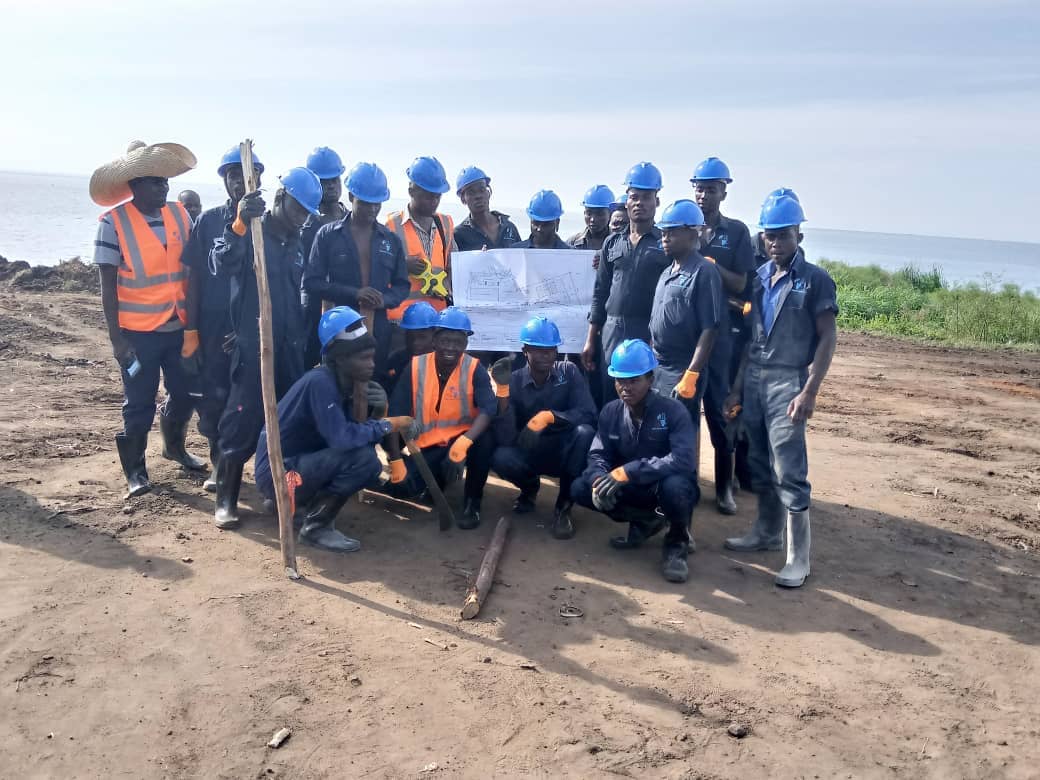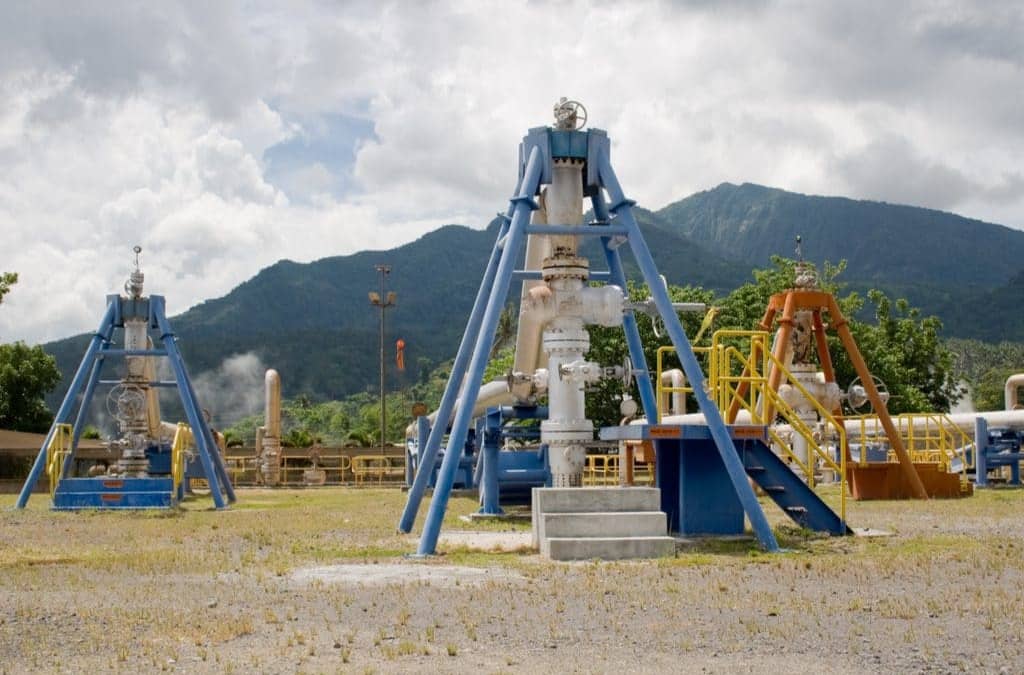Plans to build a geothermal electricity plant at Kibiro hot springs in the western district of Hoima have hit turbulence after a limited oil spill occurred during the drilling of temperature gradient wells in the areas.
The Ministry of Energy and Mineral Development said it had taken the decision to halt Temperature Gradient Holes (TGH) drilling activities in both Kibiro and Panyimur “until a comprehensive Environmental and Social Impact Assessment is conducted in accordance with the new National Environment Act No.5 of 2019 to which the Ministry commits to resolve any conflict borne out of this incident.”
On 11 November 2019, the Ministry awarded a drilling contract to M/s Royal Techno Industries Limited to drill 16 temperature gradient wells in Kibiro and Panyimur areas.
The drilling contractor, who is required to exploit an estimated 1,500MW of geothermal electricity, mobilized and started drilling wells in Kibiro.
Energy Ministry Permanent Secretary Robert Kasande said, “Unfortunately, as a project challenge, during the drilling of the eighth and last well on the night of March 29, 2020 a blow-out happened which resulted into an uncontrolled discharge of gas, drilling fluids, geothermal fluids and sediments.”
He also confirmed that “a limited oil sheen was observed on sediments.”
The development came at a time of increased resistance to the project by locals who say it will damage the area’s ecosystem.
The Bunyoro Kingdom says Kibiro hot springs is a cultural site which should be protected for tourism purposes.
Kibiro hot springs area is located in the west side of Uganda on the shores of Lake Albert at the edge of the Western arm of the East African rift valley.
Maximum surface temperature of 85 degrees Celsius has been measured in the hot springs. Findings show that geothermal surface manifestations cover a much wider area than previously thought.
Recent research by experts shows that all around these hot springs, there is sharp hydrogen sulphide smell, and gas emanations are observed to bubble out of the water especially at the main spring.
The water is observed to contain hot water algae and damp soils close by are covered with white salt efflorescence rich in sodium chloride.
Probe of Kibiro hot springs
Kasande said in a statement seen by the Media this Wednesday that after the blow-up, an inter-ministerial committee was dispatched to Hoima to assess the situation.
“The surface at the site was covered with a mixture of clay, sand and drilling mud; the place had an unpleasant smell characteristic of hydrocarbon spillage; one house belonging to Mr. Kiiza Julius Rubanjwa located approximately 60m downstream from the well towards the lake was surrounded by a mixture of clay, drilling mud and sand (effluent) and his pit latrine was filled by mud fluids that flowed from the well,” said Kasande.
“The access road along the lakeshore leading to the neighboring landing site of Kyabarangwa had residues of mud, clay and sand. The water reeds along the shore of the lake had a black deposit (resembling crude oil) at the water level mark. However, the oily sheen was observed kilometers away on all reeds along the shores of the lake in the surrounding areas and it might be associated with algae,” he added.
The committee said “much as the discharge was not known so as to effectively quantify the materials discharged into the environment, given the length of time during which the incident occurred (more than nine hours), it can be concluded that significant quantities of materials (natural gas, clay, water, drilling mud and limited traces of oil) were released into the environment.”
This is not the first time cases of oil seepages are being registered in the Albertine region.
In recent years a lot of oil discoveries have been made in the Albertine Graben.
In the process of geothermal mapping, oil seepages and old shallow exploration wells have been encountered.
One of the oil seepages was encountered mid-way between Bikunyu and Kyamwana fishing villages along the shores of Lake Albert.
Close by, there were also two old oil wells, one of them dormant, while the other one discharges black hydrocarbons especially during dry season.
At the natural oil seepage all the surrounding sediments have been stained black. Locals reported that the seepage is more active during dry seasons. The stained sediments and rocks have a characteristic kerogeneous smell.
However, Kasande said whereas what happened in Kibiro is almost similar to what happens during an oil spill incident, it may be erroneous to dub the incident an oil spill.
“This is because of the composition of the observed materials that were released into the environment – predominantly sand/water/clay from the subsurface while oil is in trace levels mainly recognizable by the characteristics of hydrocarbon smell. This incident is considered benign because even the ecology was not affected as evidenced by aquatic species that were surviving normally at the shoreline,” said Kasande.
The Ministry of Energy said it “acknowledges the impact of the incident, however benign, regrets the incidence and is addressing the environmental cleanup and remedial mitigation efforts to restore the environment based on relevant expert recommendations and the technical advisory committee.”
- UGANDAN PUPPET POLITICIANS AND PARASITIC POLITICS - March 9, 2024
- THE YOWERI MUSEVENI DICTATORSHIP MONARCHY - May 12, 2023
- POLITICIANS THINK THAT UGANDA OWES THEM ENTITLEMENT - May 12, 2023





















